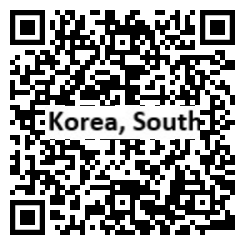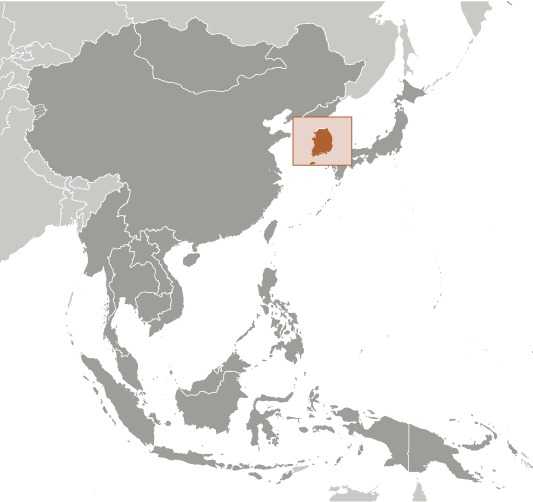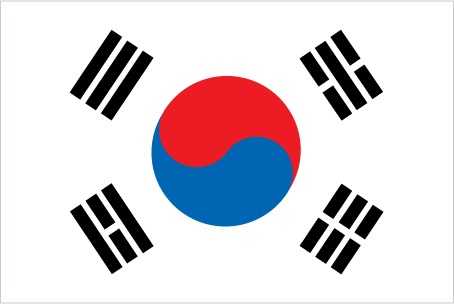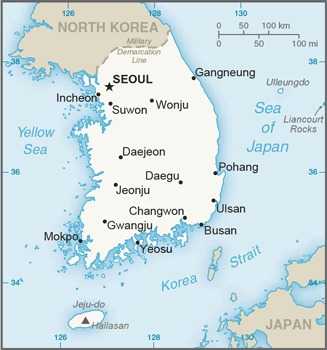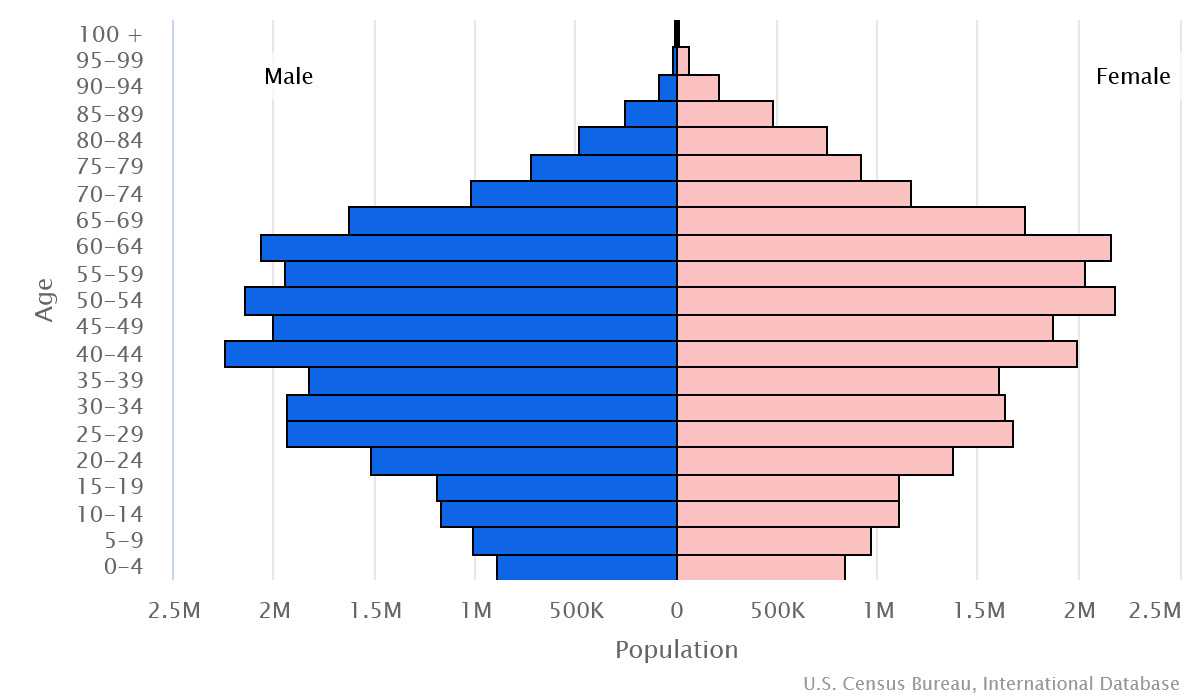Introduction
Background
An independent kingdom for much of its history, the southern half of the Korean Peninsula set up a democratic government after World War II. After fending off a North Korean invasion in 1950, South Korea achieved rapid economic growth and today is a fully functioning modern democracy.
Geography
Area
total : 99,720 sq km
land: 96,920 sq km
water: 2,800 sq km
Climate
temperate, with rainfall heavier in summer than winter; cold winters
Natural resources
coal, tungsten, graphite, molybdenum, lead, hydropower potential
People and Society
Population
total: 52,081,799
Ethnic groups
homogeneous
Languages
Korean, English (widely taught in elementary, junior high, and high school)
Religions
Protestant 17%, Buddhist 16%, Catholic 6%, none 60% (2021 est.)
Population growth rate
0.21% (2024 est.)
Government
Government type
presidential republic
Capital
name: Seoul; note - Sejong, located some 120 km (75 mi) south of Seoul, serves as an administrative capital for segments of the South Korean Government
Executive branch
chief of state: President YOON Suk Yeol (since 10 May 2022)
head of government: President YOON Suk Yeol (since 10 May 2022)
Legislative branch
description: unicameral National Assembly or Gukhoe (300 seats; 253 members directly elected in single-seat constituencies by simple majority vote and 47 directly elected in a single national constituency by proportional representation vote; members serve 4-year terms)
Economy
Economic overview
strong export- and technology-oriented East Asian economy; manufacturing led by semiconductor and automotive industries; aging workforce; increased restraint in fiscal policy while maintaining industry support initiatives
Real GDP (purchasing power parity)
$2.615 trillion (2023 est.)
$2.58 trillion (2022 est.)
$2.515 trillion (2021 est.)
Real GDP per capita
$50,600 (2023 est.)
$49,900 (2022 est.)
$48,600 (2021 est.)
Agricultural products
rice, vegetables, cabbages, milk, pork, onions, chicken, eggs, tangerines/mandarins, potatoes (2022)
Industries
electronics, telecommunications, automobile production, chemicals, shipbuilding, steel
Exports
$769.534 billion (2023 est.)
$825.961 billion (2022 est.)
$769.424 billion (2021 est.)
Exports - partners
China 21%, US 16%, Vietnam 9%, Japan 4%, Hong Kong 4% (2022)
Exports - commodities
integrated circuits, refined petroleum, cars, broadcasting equipment, ships (2022)
Imports
$761.102 billion (2023 est.)
$817.594 billion (2022 est.)
$698.98 billion (2021 est.)
Imports - partners
China 23%, US 11%, Japan 8%, Australia 6%, Saudi Arabia 5% (2022)
Imports - commodities
crude petroleum, integrated circuits, natural gas, coal, refined petroleum (2022)
Exchange rates
South Korean won (KRW) per US dollar -
Page last updated: Wednesday, July 24, 2024
